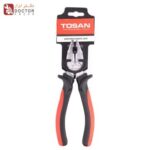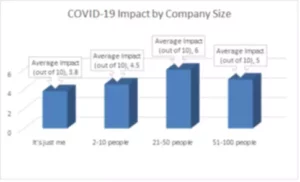I have over four years of diversified experience in providing assurance, ac… Professional Accountant with 2 years of experience in Accounting management, bookkeeping, internal auditing and taxation. Make sure you post your skills to your profile so people searching for your skills can find you. The guy loves to build financial models from his fantasy teams to checkout lines in Trader Joe’s. Claire Van Holland is a creative first, who just happens to like crunching numbers.
What is a freelance CPA?
A freelance CPA provides independent accounting and financial services to a client. Their duties may include auditing client finances or helping a client prepare taxes and other paperwork.
We are a platform that connects clients and firms seeking help filing returns and forms with tax professionals like yourself, on-demand. Furthermore, tax planning for retirement, succession, and the sale of your business can all be done with the help of a CPA. When your CPA understands your entire financial situation, including your small business or freelance income, they can better advise you on the right steps to minimize your tax burden.
Advanced Financial Modeling Best Practices: Hacks for Intelligent, Error-free Modeling
You are in no shortage of cloud-based accounting services for small businesses and larger small businesses. You can either hire the best accountants or choose bookkeeping software and accounting software for it. Rather than hiring 10 people for different jobs, the accounting software can handle all tasks for you. They are majorly designed for independent contractors, freelancers, and sole proprietors. Brian is a CPA and certified financial planner with significant experience serving startups and family-owned businesses to large international corporations.
- Once you hire a professional accountant to carry out your business’s accounting needs, you will realize that you are saving more than just money.
- Previously, he led the financial due diligence for several acquisitions, including a $14 billion beverage company and created valuation models of firms in various industries.
- To help you organize your freelance tax preparation, here is a basic list of typical expenses incurred by freelancers.
- Allows corporations to quickly assemble teams that have the right skills for specific projects.
- Compared to regular accountants, CPAs have a greater knowledge and are held to higher standards.
- UpStack has a diverse talent pool that’s highly scalable depending on the size and scope of your business.
Here at 212 Tax & Accounting Services, we provide self employment tax solutions to independent professionals and other self employed individuals in a diverse range of businesses. Our tax accountants help clients who are graphic designers, business analysts, project managers, specialized technology consultants, personal trainers, temporary workers and other self-employed individuals. We know what goes into running your own business, and our tax and bookkeeping strategies can save you a lot of time and money.
Bookkeeper Vs Accountant: What’s the Difference?
Peter enjoys freelancing to help clients with capital raising, M&A, FP&A, and various CFO-related functions. A major reason you should hire CPA’s is that they save your time and offer great precision. Help us determine what software you are familiar with, your ideal schedule, and what returns you feel comfortable completing. Strictly Necessary Cookie should be enabled at all times so that we can save your preferences for cookie settings. For larger companies who have more specific needs when it comes to bookkeeping, we recommend a more exclusive and selective site like Toptal or UpStack.
They also have convenient features like a time tracker and a mobile app so that you can check on the progress of your accountant in real-time, whether you have access to your computer or not. This site also has the most freelancers when it comes to sheer numbers. The site boasts the profiles of over 50 million freelancers– more than Upwork or Fiverr. They’ve worked for big-name brands like Microsoft and Lego, but don’t let that intimidate you. UpStack has a diverse talent pool that’s highly scalable depending on the size and scope of your business. They’re known for their rigorous screening process when selecting accountants with various skill reviews and test screenings, narrowing their candidates to the top 3% of all qualified developers.
Written by Agro Accounting CPA
Compared to regular accountants, CPAs have a greater knowledge and are held to higher standards. State and national regulatory agencies, such as the AICPA, implement rigorous requirements for continuing education, ensuring CPAs are up to date on the latest regulations. Furthermore, CPAs need to meet certain criteria, including no felonies on their record and strong ethics. We provide advice and reviews to help you choose the best people and tools to grow your business. On Upwork, a freelance accountant will typically charge from $12-$32 per hour.
However, if you are already in business, you can hire a CPA whenever you feel overwhelmed or need additional assistance. Business owners and freelancers don’t have a great deal of free time to dedicate to the financial and tax functions of their business. Small https://www.bookstime.com/articles/freelance-accountant businesses and freelancers are often set up as a sole proprietorship or single-member LLC, meaning all income or loss is reported on an individual return. As a freelancer, you can understand the importance of keeping track of your financial matters.
A seasoned finance professional and CPA, Bob has executed diligence, valuation and M&A mandates while serving in senior roles at Fortune 500 companies (Merrill Lynch, PHH, Discover, BNY Mellon). He is a finance, strategy and operations expert, who employs a collaborative approach that balances customer, regulatory and financial objectives. Bob is freelancing to help growth companies build financial infrastructure and reach their full potential. Juba is the founder of angioClast, a Cambridge-based biotech startup focused on cancer research. Before entrepreneurship, Juba was a seasoned CFO with multi-industry experience and worked on projects, ranging from an equity sale of a $150 million telecom company to a $50 million hotel business turnaround.









